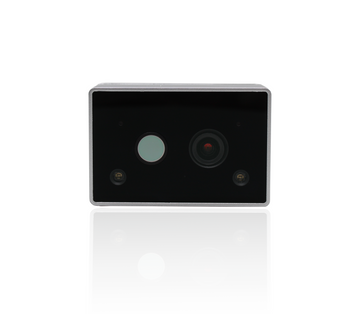OAK Thermal
Based on
Connection
Ethernet 1Gbps
Dot projector
No
Infrared
Yes
IMU
Yes
Sensor 1 - IMX462
Type
Color
DFOV / HFOV / VFOV
Size
1/2.8
Shutter
Rolling
Focus
Fixed
Sensor 2 - TINY1C
Type
Monochrome
DFOV / HFOV / VFOV
Size
1/3
Shutter
Global
Focus
Fixed

Looking for more details? Visit specific features at Platform -> Features
RVC2 inside
- 4 TOPS of processing power (1.4 TOPS for AI) - RVC2 NN Performance
- Run any AI model, even custom-architectured/built ones - models need to be converted.
- Encoding: H.264, H.265, MJPEG - 4K/30FPS, 1080P/60FPS
- Computer vision: warp/dewarp, resize, crop via ImageManip node, edge detection, feature tracking. You can also run custom CV functions
- Object tracking: 2D and 3D tracking with ObjectTracker node
- On-device programming: Run custom logic/tasks on-device (guide)
Connectors

| Pin | M12 pin | M8 pin | M8 functionality |
|---|---|---|---|
| 1 | Eth MX0+ | BOOT | Pull this pin high with 10k resistor at startup for USB boot. |
| 2 | Eth MX0- | FSYNC ISO | Isolated Frame synchronization input signal for cameras |
| 3 | Eth MX1+ | USB D+ | USB 2.0 interface that can be used to connect to the OAK device (eg. reflash) if USB boot is enabled (via AUX GPIO 3V3). |
| 4 | Eth MX1- | USB D- | USB 2.0 interface that can be used to connect to the OAK device (eg. reflash) if USB boot is enabled (via AUX GPIO 3V3). |
| 5 | Eth MX3+ | VBUSIN | This pin is used for sourcing 5V power to accessory devices connected to the M8 connector. If trying to boot the device in USB boot mode, this pin can also sink current. |
| 6 | Eth MX3- | Strobe ISO | Isolated Strobe output signal for cameras |
| 7 | Eth MX2+ | GPIO 5V | GPIO 5V control signal |
| 8 | Eth MX2- | GND | Ground |


External triggering: Sensors require 1V8 rising edge on FSYNC for the trigger event. The input trigger voltage should be 5V (goes through a level shifter to 1V8). For an example, see External FSYNC Example.
Power consumption
- Base consumption + PoE circuitry + camera streaming: 3W - 3.5W
- AI subsystem consumption: Up to 1W
- Stereo depth pipeline subsystem: Up to 0.5W
- Video Encoder subsystem: Up to 0.5W